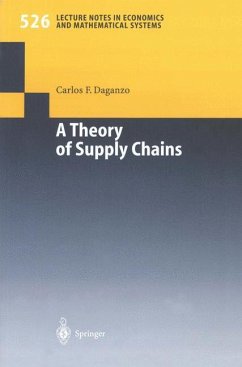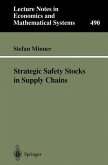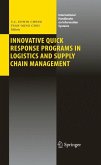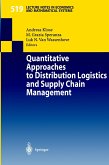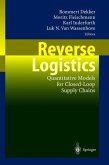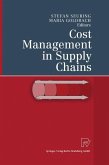This book summarizes a set of lectures given at U.C. Berkeley in the Fall of 2001, highlighting the connection between traffic flow, queuing systems and supply chains. The book unveils the root causes of the "bullwhip" effect; i.e., where the production of raw materials in a supply chain is seen to be more volatile than that of intermediate goods, and even more so than the final customer demand. It also shows that this indesirable effect arises if suppliers act in a certain non-cooperative way, even if they have perfect information about the future. Their actions, just as importantly as what they know, determine the stability of a supply chain. The book then describes control methods for eliminating all instabilities without increasing supplier costs, and presents approximate cost formulas. It also shows that for every supply chain, there is a dual queuing system with identical behavior, and that queuing systems can be similary controled.
This work was stimulated by a comment made by a former student (Prof. Alan Erera of Georgia Tech) in connection with an inventory stabil ity game he was going to play in one of his logistics classes. This was the well-known "beer-game" that is often played in business schools to illus trate the "bullwhip" effect in supply chains. Al had said to me that he did not have to tell his students how to reorder replacement parts from the other members of the supply chain because he knew from experience that the order sizes the players would generate as the game progressed would become chaotic anyhow. Since I had not played the beer game, his asser tion was intriguing to me. Why would such an unstructured game always lead to the same undesirable effect? Did it have something to do with psy chology? What is it that players did to generate instabilities? I posed these to other people but could not get completely satisfactory an questions swers. Thus, the bullwhip mystery remained, at least in my mind. Since inventory chains are "conservative" systems analogous to a traffic stream, and since traffic flow models exhibit similar effects (the instability of automobile platoons and of certain numerical methods being two nota ble examples)' I suspected that traffic flow theory might shed some light on the puzzle.
Hinweis: Dieser Artikel kann nur an eine deutsche Lieferadresse ausgeliefert werden.
This work was stimulated by a comment made by a former student (Prof. Alan Erera of Georgia Tech) in connection with an inventory stabil ity game he was going to play in one of his logistics classes. This was the well-known "beer-game" that is often played in business schools to illus trate the "bullwhip" effect in supply chains. Al had said to me that he did not have to tell his students how to reorder replacement parts from the other members of the supply chain because he knew from experience that the order sizes the players would generate as the game progressed would become chaotic anyhow. Since I had not played the beer game, his asser tion was intriguing to me. Why would such an unstructured game always lead to the same undesirable effect? Did it have something to do with psy chology? What is it that players did to generate instabilities? I posed these to other people but could not get completely satisfactory an questions swers. Thus, the bullwhip mystery remained, at least in my mind. Since inventory chains are "conservative" systems analogous to a traffic stream, and since traffic flow models exhibit similar effects (the instability of automobile platoons and of certain numerical methods being two nota ble examples)' I suspected that traffic flow theory might shed some light on the puzzle.
Hinweis: Dieser Artikel kann nur an eine deutsche Lieferadresse ausgeliefert werden.

